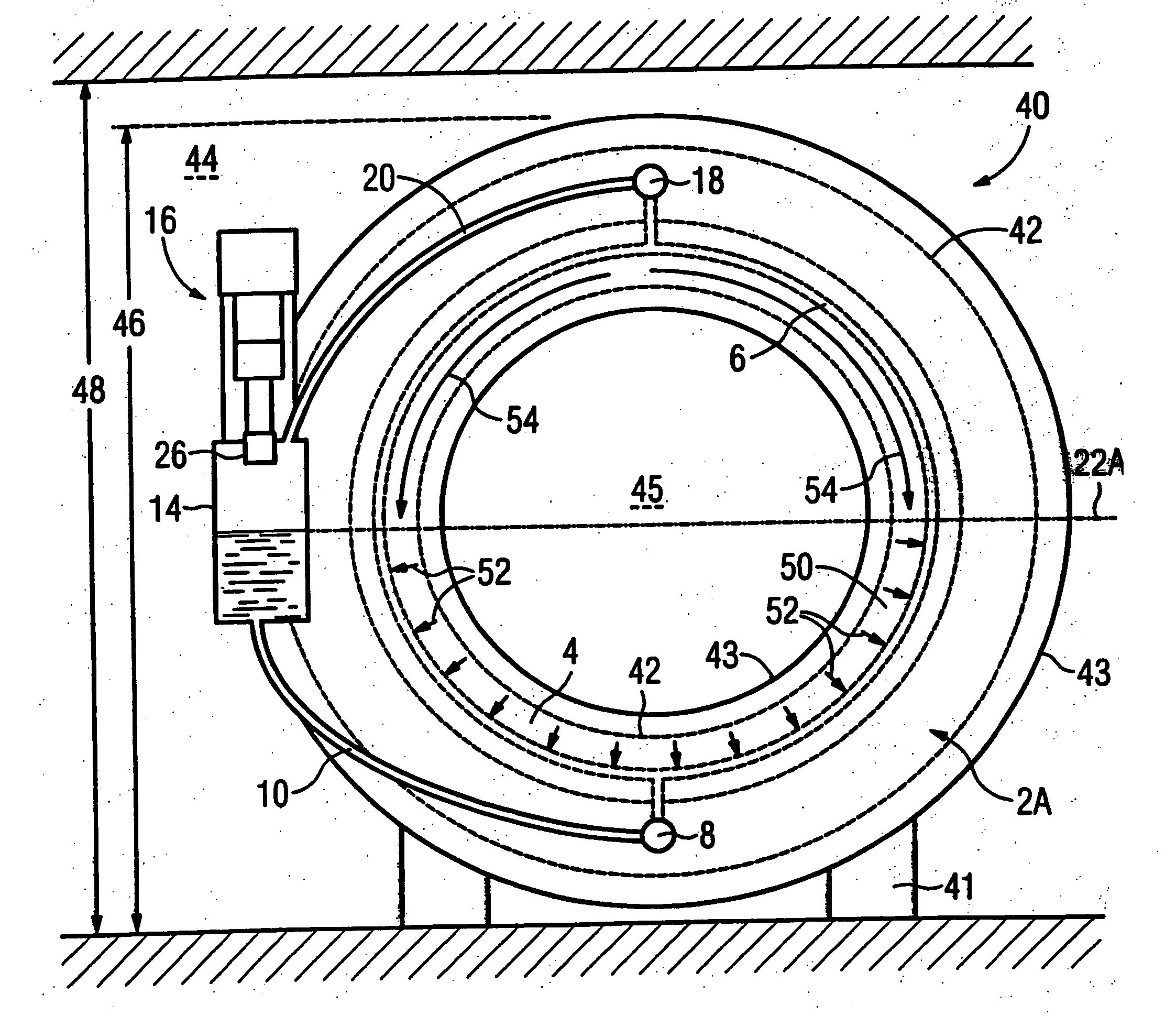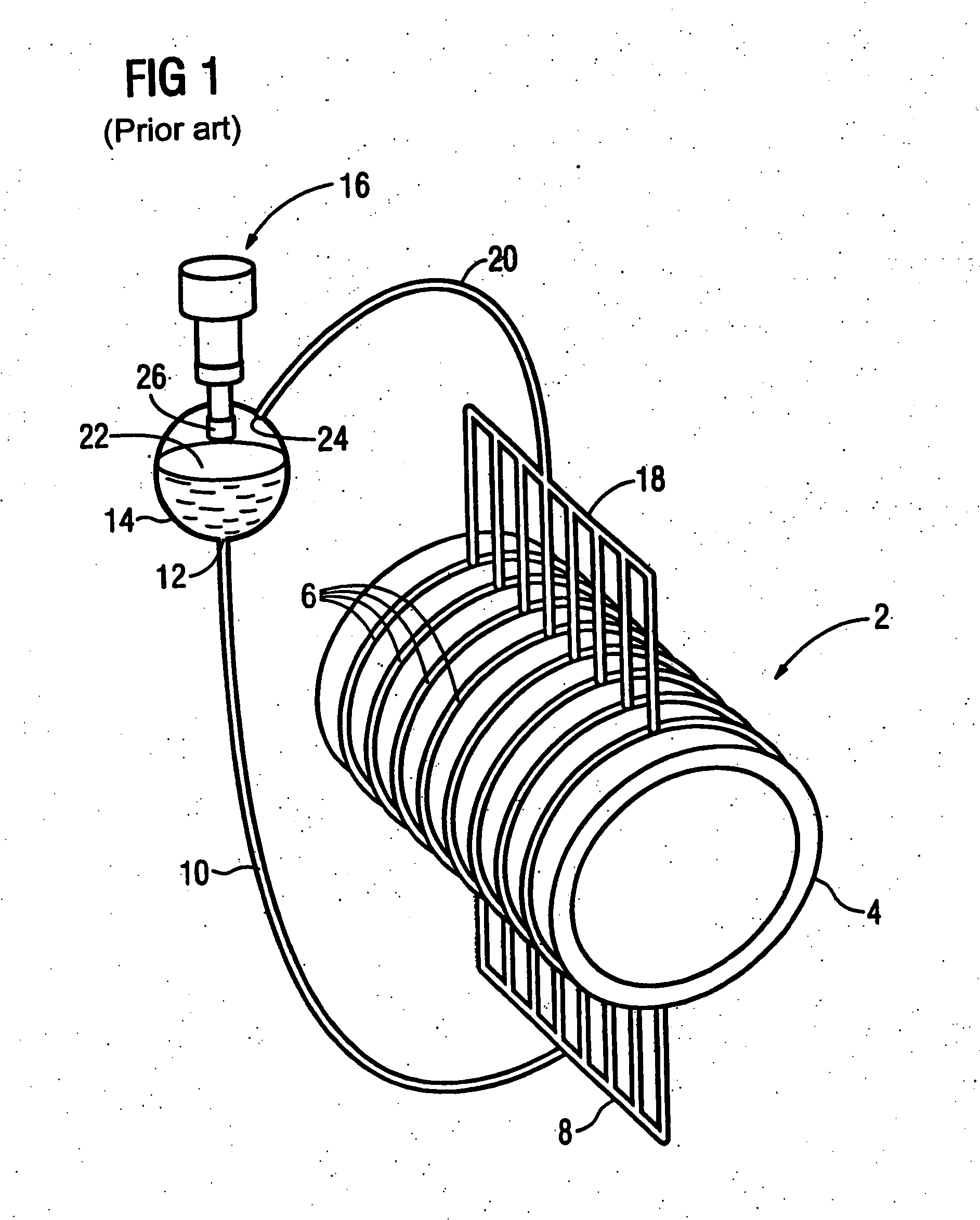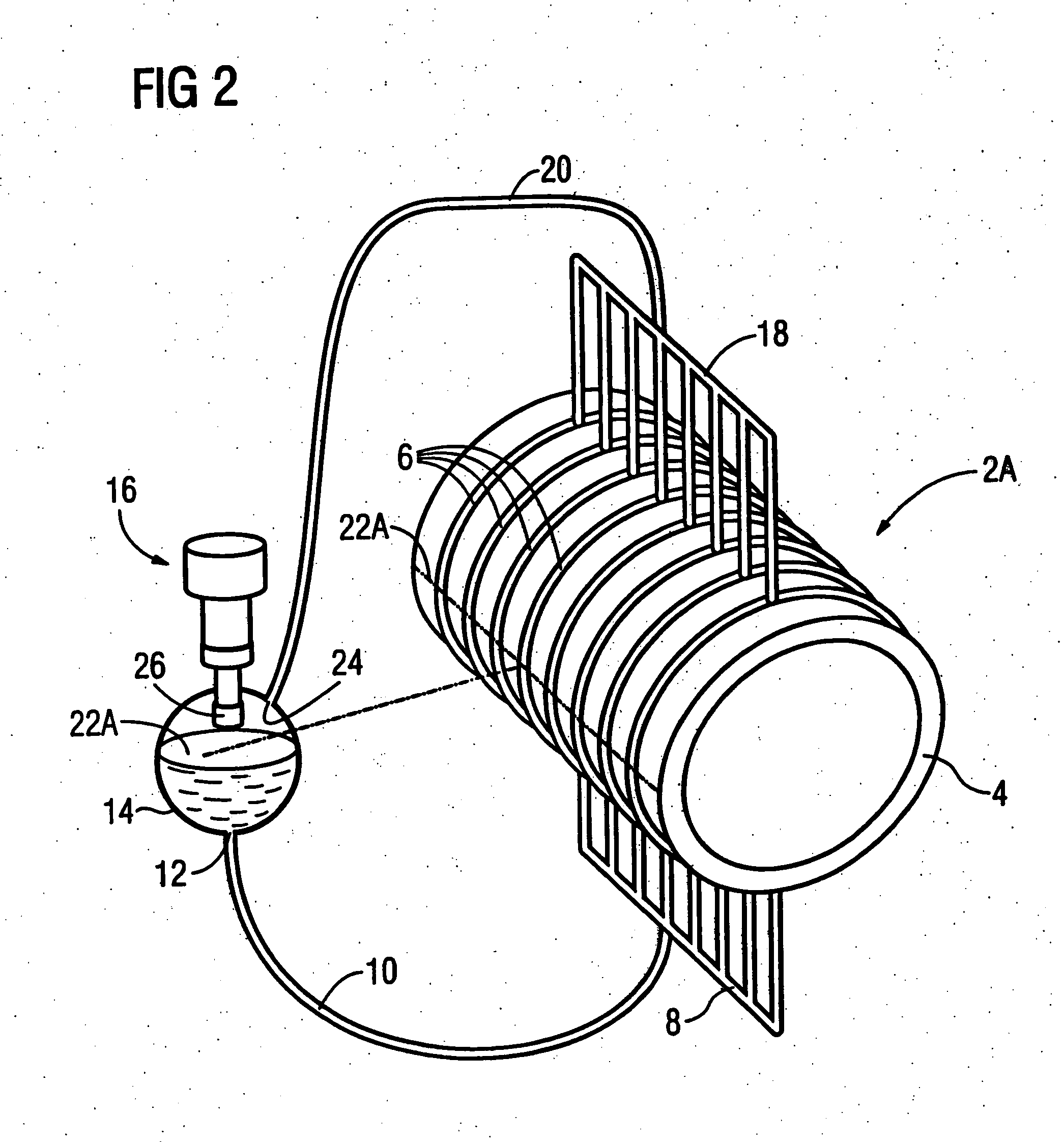Spacing-saving superconducting device
- Summary
- Abstract
- Description
- Claims
- Application Information
AI Technical Summary
Benefits of technology
Problems solved by technology
Method used
Image
Examples
Embodiment Construction
[0029]FIG. 1 shows a superconducting magnet 2 with a cooling system in a schematic perspective representation. An arrangement of the shown type is, for example, known from DE 33 44 046 C2. The magnet 2 is cylindrical and has a number of superconducting windings that are not shown here. The windings are wound around a coil body 4 in a known manner, for example within recesses. Conduits 6 for accommodation of a cryogenic agent (for example liquid helium) are embedded in a number of cross-section planes of the coil body 4. The conduits 6 are copper tubes. For embedding they can alternatively run in further recesses around the coil body 4 and exhibit a good thermal contact with the coil body 4. The thermal contact can be achieved by known techniques such as welding, force fitting, casting or bonding. Stainless steel or aluminum can also be used as alternative materials for the conduits 6. Cooling of the coil body 4 and the superconducting windings is achieved with liquid helium located ...
PUM
 Login to view more
Login to view more Abstract
Description
Claims
Application Information
 Login to view more
Login to view more - R&D Engineer
- R&D Manager
- IP Professional
- Industry Leading Data Capabilities
- Powerful AI technology
- Patent DNA Extraction
Browse by: Latest US Patents, China's latest patents, Technical Efficacy Thesaurus, Application Domain, Technology Topic.
© 2024 PatSnap. All rights reserved.Legal|Privacy policy|Modern Slavery Act Transparency Statement|Sitemap



